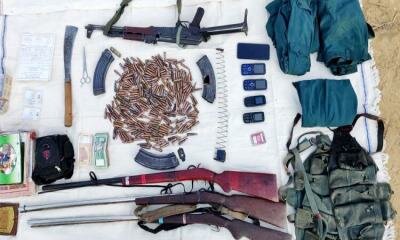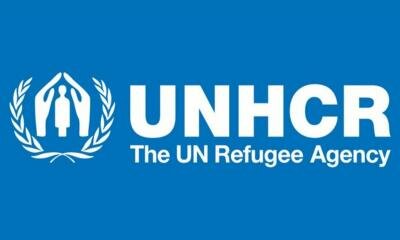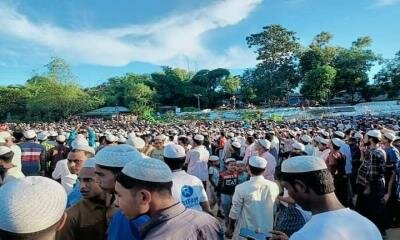COVID-19: A Call For Regional Cooperation
Cox Gazette | Imran Ali April 29, 2020, 02:58 PM

As of April 27th, 2020 the total cases affected with COVID-19 in South Asian region are 49,048 mere 1.5% of the global toll of 29, 95,226 despite that South Asia shares 25% of the world’s population. The death to infected ratio of South Asia is 2.7% against 7% globally and 5.59% of China in purview of perhaps most worst public health systems, lower per capita income and low nutrition levels. Given the population size, and intense population density it fared better than many other parts of the world.
Lockdowns by the governments across the region have clearly contained chain of transmission through social and physical distancing. However scarcity of testing kits and the massive size of population, improved testing might change the statistics. Moreover difference of climate, factors of immunities and social behavior might have impact of disease spread, morbidity and high mortality.
The lockdowns have saved precious lives, but has endangered livelihood of billions of people in developing economies including South Asia. The Global economy has been pushed into recession by COVID-19 pandemic. The recession is getting worse with the passage of time and uncertainties accrued to it, and the inevitable measure taken by the governments. The South Asian regional growth rate is forecasted by the World between 1.2 to 2.8%, against 6.3% projected worst performance in the last 40 years with 7 to 10% GDP deficits.
Economies across the region may face high intensity supply and demand shocks, with higher demand for food and consumer goods like food and medicines, but this demand might be offset by other non-essential consumer good. India, Pakistan, Bangladesh and Nepal have a large diaspora especially in Gulf and EU; remittances might reduce rapidly due to layoffs and reducing the purchasing power of family back at home. Disruption in supply chains will reduce the availability of raw materials and my result in inflation; especially of consumer goods.
More than 85% of the South Asian economies consist of MSME’s; self-employed, small scale entrepreneurs, and daily wages informal laborers, the lockdown puts them in a hard trade-off of getting infected or going hungry. While governments are locking down economies, special social protection is needed; as ensuring livelihoods are most important aspect of saving lives. Therefore expansionary measure would be need for provision of employment and domestic production. Moreover, cutting down the interest rate and exchange rate are indispensable for a constant flow of funds for businesses to carry on during this difficult time.
Since viruses do not understand politics and do not respect the manmade borders, the COVID-19 calls for global and regional solutions. We need to frame solutions that would work and aid the most vulnerable with collaborative efforts to respond to the extensive socio-economic impact on people. Afghanistan and Nepal are most vulnerable in South Asian region, mainly being land locked and due to proximity to hard hit areas of Iran and China. Maldives relying solely on tourism could face devastating economic shocks. Therefore India and Pakistan, being the immediate neighbors and larger economies needs to assist the landlocked economies of the region.
This crisis has given us a wakeup and has provided huge opportunity to reboot our regional cooperation, saving business to default and exacerbating widespread poverty and economic inequality. Given that isolation is not a long term solution, the South Asian nations have to exhaust the palpable vacuum in regional cooperation, and realize that only multilateral efforts and cooperation will make a difference.
The platform of SAARC may be used for dialogues at the level of Head of governments, to chalk out a common agenda, revitalizing the regional agreements and institutions. Revival of core Technical committees on health, trade and social issue should be done on war footing basis, to establish dialogue and on formulating strategies in managing and post COVID-19 social and economic recovery.
Establishing SAARC COVID-19 Emergency Fund and revving the Technical Committee on health is a positive premonition but the peoples of the South Asian region are looking beyond it. The region needs resumption of regional trade, transit trade for the landlocked economies. We just not need each other during this pandemic but in post-pandemic recovery from the damages and losses due to lock down would need intense regional cooperation. Avoiding conflicts the regional stakeholders need to start a new chapter of regional cooperation in wake of COVID-19.
The Writer is Director at SAARC Chamber of Commerce and Industry, an Apex body of SAARC.
More News from Opinion
-

Internet access will no longer be blocked in Ukraine says Elon Musk
-

No possibility of US sanctions expansion: Shahriar
-

UNHCR and IOM Condemn Deadly Attack on Displacement Site in DR Congo
-

Teleworking during COVID: Risks, benefits and steps to a ‘new normal’
-

Army officer among 4 dead in Bandarban gunfight
-

Health tech startup Best Aid raises investment from YY ventures.
-

DiCaprio praises Bangladesh on new marine protected area around St Martin`s
-

Guterres calls for end to conflict in Ethiopia after deadly attacks
-

Rohingya refugee camps hit by second fire in 10 days ,Leaving thousands homeless
-

BNCA begins a shadow investigation into elephant killing in Cox’s Bazar
-

One more elephant found dead in Cox`s Bazar, death toll 7 in 11 days
-

Shahriar Nisan joins BDMORNING as Acting Editor
-

Two more Rohingya men arrested over Mohib Ullah killing
-

One arrested over Rohingya leader Muhib Ullah killing.
-

Hundred Plus UN Job Openings in a glance
-

Youth empowerment for tourism’s future ,The eight winning solutions
-

UN Refugee agency condemns killing of Rohingya refugee leader
-

Thousands of `Rohingya Refugees` pay their last respects to Mohib Ullah
-

Rohingya Leader Mohibullah Killed in Cox`s Bazar camp
-

Internet connection cuts off in more than ` 25 `townships in northwestern Myanmar



Write Your Opinion :